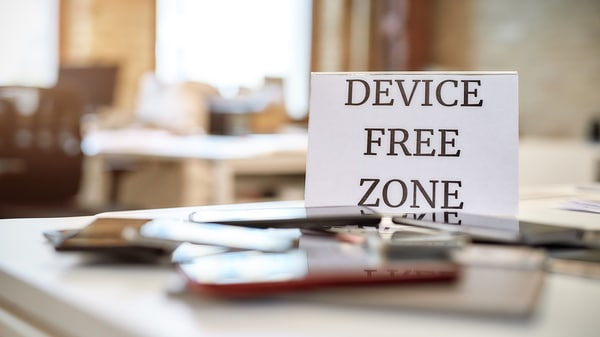With bring-your-own-device (BYOD) policies increasing, and the prevalence of screens in daily life, some institutions, such as schools and museums, are beginning to create screen-free areas, banning smartphones, tablets, and laptops. One of the methods of keeping screens secure is a product called Yondr, which physically locks up smartphones. What is Yondr, and how does it work?
What Is Yondr?
Yondr is a physical system that keeps people from using their phones in certain areas. The technique is simple; you place your phone in a small pouch, which locks. You can then enter the screen-free area, and you’ll keep your phone, with no tracking system or on-site storage needed. Once you’re done, you can take your phone to an unlock station and return the pouch. Applications for Yondr include concerts, events, schools, and government facilities where privacy is important, such as courts.
Does Yondr Interfere With Phones?
Since it’s a physical pouch system that keeps people from poking at the screen, Yondr doesn’t need to interfere with a phone’s connectivity. Text messages, location services, parental apps, and other vital systems will still be functioning on a phone in a Yondr pouch. This makes them particularly popular in schools since it can allow students to keep their phones while locking them up during certain times, such as test-taking or physical activity periods, and you’ll sometimes find Yondr paired with BYOD systems. Kids are allowed to tap the internet to study, research a topic, and use the positives of a phone while setting aside concerns about test-taking and social apps.
Why Are Schools Using Yondr?
One school district using Yondr claims to have seen improvements in grades, that kids are paying more attention in class, and that they’re seeing more prosocial behavior. However, that’s anecdotal; these testimonials have not been scientifically tested. Nonetheless, for schools that are concerned about cheating and other misbehavior, the benefits of sealing up student phones in a pouch are obvious.

Are There Any Concerns?
Yondr isn’t a foolproof system; anecdotal stories have gone around about kids using a fake phone that goes in the pouch while the real one is somewhere else in their clothes or on their bag. Similarly, Yondr doesn’t appear to have an “emergency unlock” system for situations where kids may need their phones immediately, which may give some parents pause. Similarly, it’s not clear what will happen if kids forget to get the pouch unlocked at the end of the school day; are they stuck waiting until the next day? And Yondr doesn’t appear to have any gaps to allow you to charge your phone or add accessories, which may be an issue.
Ultimately, just like parental apps, it needs to be remembered that items like Yondr are simply tools of last resort. They’re designed as temporary solutions, but the long-term answer will be parents, teachers, and children working together to develop mature, intelligent approaches to how screens are used in school and the workplace. To learn more about working together to develop healthy approaches to screen time, contact us!


Join the conversation